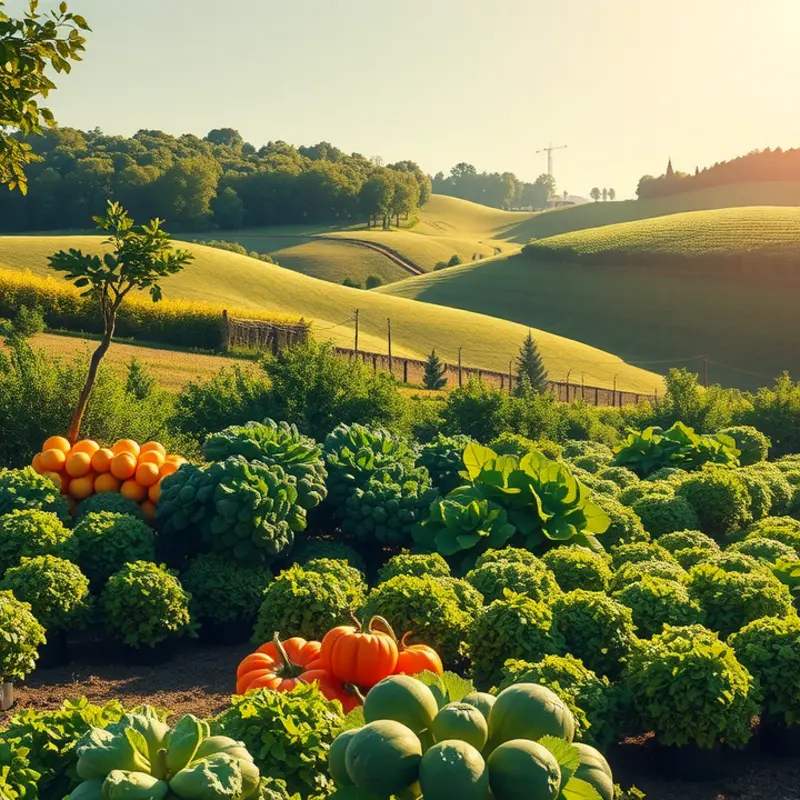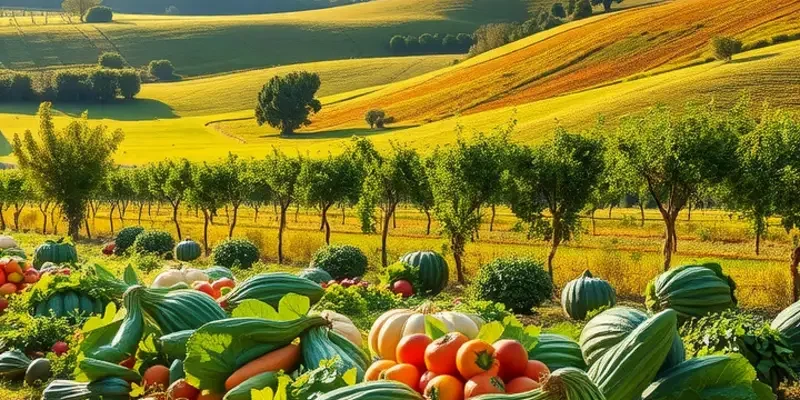Food is more than sustenance; it embodies culture, history, and sometimes, strict taboos. Across the globe, various communities uphold unique culinary beliefs that dictate what can and cannot be consumed. From insects being a delicacy to sacred cows roaming free, these food taboos are integral to local identities and traditions. They spark curiosity and emphasize the importance of honoring cultural diversity in our culinary experiences.
The Sacred and the Forbidden: Beliefs Shaping Our Plates

Food is a lens through which we can explore the diverse tapestries of culture and religion around the globe. Sacred and forbidden foods tell a story, one intertwined with the beliefs and practices that have been passed down through generations.
In many Hindu communities, the cow stands as a revered symbol, considered a manifestation of nurturing and sustenance. This veneration influences dietary practices significantly; beef is off the menu for most devout Hindus. Instead, vegetarianism thrives, often accompanied by a rich assortment of plant-based proteins and dairy products, emphasizing culinary adaptations that align with their spiritual beliefs.
In contrast, Islamic dietary laws, known as halal, delineate the parameters of permissible and forbidden foods. Pork, for example, is expressly prohibited in Islam due to its classification as haram, or forbidden. These guidelines extend beyond consumption, shaping entire markets and culinary trades. The abidance by these laws reflects a dedication to faith that’s mirrored in countries with significant Muslim populations, such as Indonesia and Turkey, where halal-certified foods predominate.
Similarly, Jewish dietary laws, or kashrut, provide a complex framework determining permissible foods, known as kosher. These laws not only govern ingredients but also the methods by which they’re prepared and consumed. For instance, mixing meat and dairy is forbidden, impacting traditional Jewish dishes and necessitating separate sets of dishes in kosher kitchens.
In Buddhism, the dietary practices vary widely based on local cultures and the particular school of thought followed. Many Buddhists embrace vegetarianism, though this isn’t universally mandated. The principle of ahimsa, or non-violence, profoundly influences these practices, extending compassion to all living beings and consequently shaping dining choices.
Further exploring boundaries of food taboos, we find certain indigenous groups around the world attributing sacred qualities to specific animals or plants. Among the Maori of New Zealand, certain marine life forms are respected and selectively harvested, reflecting an intricate balance between consumption and conservation.
These cultural distinctions in food consumption are not just about restricting diets. They represent deep-rooted systems of values and ethics that sustain cultural heritage and identity. The reverence or rejection of specific foods channels history, spirituality, and community ethos into everyday life.
Cultural and religious influences on diet offer a broader understanding of what sustainability and respect mean within each context, inviting wider discussions and understandings across global cuisine landscapes. For those interested in exploring how such influences have shaped culinary traditions worldwide, the interplay of trade and food culture offers an insightful perspective on these longstanding intersections.
By examining these sacred and forbidden foods, we not only appreciate the diversity of the global culinary landscape but also gain insight into the values and beliefs that continue to shape food choices in different societies.
From Meal to Myth: Folklores and Fables Surrounding Food Taboos

The tapestry of myths and legends around food taboos is as rich as it is varied. These stories not only deepen our understanding of cultural practices but also shape the way future generations approach food. Among Mediterranean cultures, the presence of the ‘evil eye’ is a common belief surrounding certain foods. This belief warns against envy and malice that might be transmitted through food. The narratives suggest that particular dishes, often imbued with vibrant colors or ingredients, attract unwanted attention. To counteract this, people employ talismans or certain culinary rituals. It is an intermingling of caution and custom that safeguards not just the meal, but the community consuming it.
In China, the Mid-Autumn Festival is replete with tales surrounding mooncakes. These dense pastries are not merely a culinary delight but storytellers as well. The textural richness of the mooncake is matched only by the richness of its legends. One such story speaks of their use in the Yuan dynasty as vessels for secret messages used during a rebellion. In this way, mooncakes become more than a food item; they are symbols of resistance and unity celebrated year after year.
In West African cultures, yams hold sacred status, with taboos interweaving throughout tradition and ceremony. The New Yam Festival is an event where the offering of yams symbolizes a bridge between the living and their ancestors. Myths speak of yams as divine gifts from the gods, with some tribes believing improper preparation could invite misfortune. This ceremony solidifies the yam as both staple and symbol, reminding communities of their heritage.
Oftentimes, these food myths reflect the deep interconnection between sustenance and survival. In Native American lore, the story of the ‘Three Sisters’ emerges—a tale where corn, beans, and squash complement each other both nutritionally and mythologically. Their harmonious growth in the field is echoed in the stories that tell of their collective strength and resilience against adversity.
Similarly, the legends surrounding lamb consumption during Easter in various Christian cultures highlight the sanctity associated with this meat. Stories speak of lamb as a divine offering, steeped in religious significance that transcends its preparation. The lamb serves as a reminder of sacrifice and renewal, themes that are intricately woven into the fabric of Easter traditions.
These food narratives are more than mere tales; they are tools for teaching values and preserving customs. As with any folklore, they operate on multiple levels: instructing, entertaining, and ensuring continuity of tradition. By passing down these stories, cultures impart lessons about respect—for the earth, for one another, and for the complex histories that inform today’s meal choices.
For those interested in diving deeper into the overlap between food customs and cultural narratives, you might explore more on culinary influences and trade, which illuminate the profound impact of historical exchanges on contemporary food practices.
Final words
Food taboos and beliefs not only shape dietary choices but also offer insights into the rich histories and identities of cultures worldwide. Understanding these practices invites a respectful curiosity and fosters culinary adventures that are both delicious and enlightening. As we explore diverse cuisines, it is crucial to acknowledge the underlying traditions that inform our food experiences. In bridging the gap between cultures, we expand our palates and cultivate a deeper appreciation for the world’s culinary tapestry.








